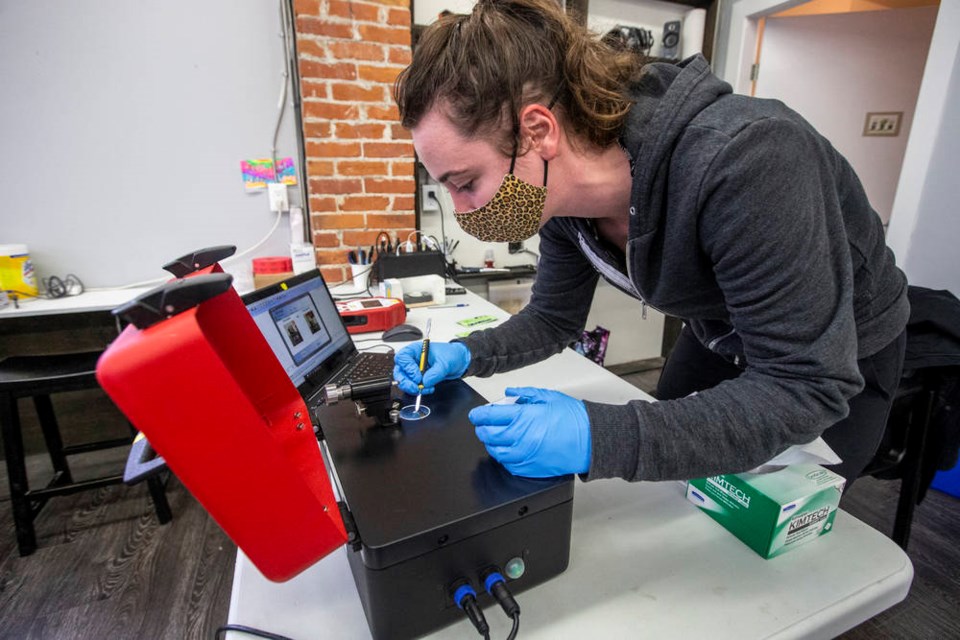A free drug testing site opened in a North Park storefront this week, as the province reported its deadliest February yet for illicit drug overdoses.
The service, operated by a group of scientists at the Vancouver Island Drug Checking Project, is offered anonymously to anyone who wants to know what’s in a substance before they or a loved one uses it. Using test strips, the team can immediately determine whether fentanyl or benzodiazepine is present in a sample, said Bruce Wallace, co-principal investigator of the project.
“Then we run it through our suite of spectrometers. And that’s where we can give the more detailed composition,” he said.
Scientists can run tests on samples as small as a grain of rice and provide information on the composition of the substance in about 20 minutes. The goal is to offer some quality control in the unregulated drug market, said Wallace, an associate professor of social work at the University of Victoria.
The team can let people know if a substance is what they expect it to be before they use it. Someone might also bring in a sample of something they’ve used if they experience unexpected effects, he said.
The group has been offering drug-checking services in various locations for the past two years. The project has mainly operated in overdose prevention sites and was forced to move during the pandemic as indoor sites closed, he said.
Opioids are the most common substance brought in for testing, and about also contain benzodiazepines. The service also tests stimulants such as cocaine, methamphetamine and MDMA, Wallace said.
They try to provide as much detail as possible about a sample’s composition to give an idea of its potency. Wallace’s co-investigator Dennis Hore, a UVic chemistry professor, is focused on refining their ability to quantify the ingredients in substances.
Wallace is hoping that having a storefront location at North Park and Cook streets will bring some visibility to harm-reduction services and reduce stigma.
“It’s not right to continue to hide away substance use and to continue to hide harm reduction,” he said.
The opening of the new drug testing site comes as the province announced 155 lives lost last month to toxic illicit drug supply.
It’s the 11th consecutive month in which B.C. has recorded more than 100 fatalities, said chief coroner Lisa Lapointe in a news release, and the second in which there has been an an average of more than five deaths a day.
She said the number of deaths highlights the ongoing critical risk to public health and safety from the illicit drug market.
Fifteen per cent of the deaths so far in 2021 have been people over 60, and 40 per cent were over 50, continuing a trend that has been seen in older age groups in recent years, the coroner said.
The service said increased variability and toxicity in the drug supply continues to significantly contribute to the overall number of suspected deaths.
Carfentanil, a more lethal analogue of fentanyl, was detected in 18 of the 155 deaths, an increase from the January total of 14, the largest monthly figure recorded since April 2019.
Sheila Malcolmson, minister of mental health and addictions, called the February deaths a “heartbreaking loss.”
“We know people are hurting now, and we must do more to stop this terrible surge in overdose deaths. Stigma and criminalization are driving people to use alone, and the pandemic is pushing people further into isolation.”
She said in 2019, before the pandemic, B.C. had brought overdose deaths down for the first time since 2012.
regan-elliott@timescolonist.com
— With a file from The Canadian Press



